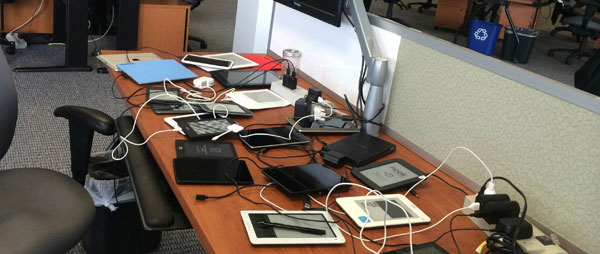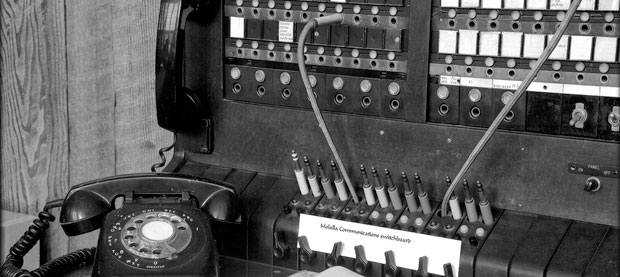Sanders Kleinfeld
Asynchronous now!
Everyone wants an alternative to email, but do we really need one?
Editor’s note: this post originally appeared on Medium; it is republished here with permission.
Conventional workplace wisdom declares email a daily scourge. We receive too much of it. We spend too much time replying to it. We concoct elaborate strategies to cope with it and avoid incurring a debt that downward-spirals to email bankruptcy.
We bow down at the altar of Inbox Zero, the methodology that dictates we take prompt, concrete action to dispatch with every single message we receive. Reply to it. Or file it. Or delete it. We turn the drudgery of processing the flood of correspondence into a game. Inbox Zero, FTW! Achievement unlocked … till the next time we hit refresh. Because emails are like gray hairs: for every one we send packing, five more will soon arrive in its place. Any client-side strategy we take to conquer our inboxes is thus limited by the fact that it’s palliative, not ameliorative. Perpetuating Inbox Zero means living in a constant state of vigilance, aggressively and swiftly responding to every incoming message. It means becoming an email answering machine!
Five trends signaling a bright future for ebooks
It's time to place a moratorium on negativity and start working toward book publishing's bright future.

Editor’s note: this piece originally appeared on Medium; it is cross-posted here with permission. The writer is an O’Reilly employee, but he is expressing his personal views. We love his optimism about the future and wanted to share it with the Radar audience.
“THAT COMPANY is destroying my P&L, the entire book industry, and the fabric of civilized society.”
“I really like their free, two-day shipping, though.”
“Me, too.”
There’s a lot of tsoris in the publishing community right now over ebooks. Much of it has something to do with THAT COMPANY WITH THE WEBSITE THAT SELLS ALL THE THINGS, how THAT COMPANY has a stranglehold on the book market, how it’s devaluing our literary canon, how it has publishers right where it wants them.
But we’re not just cranky about THAT COMPANY. Other jeremiads include — but are not limited to — the painfully slow adoption curve of EPUB 3, the demise of beloved sites like Readmill, the failure of “enhanced” ebooks to gain traction, sundry ereader feculence, stagnating ebook sales, and sideloading.
I’m a cynic by nature, and count wallowing among my favorite hobbies, but after half a decade as a software engineer in the digital publishing space, even I’ve had enough and am issuing a moratorium on the negativity! Instead, I want to talk about some of the promising trends I’ve seen develop over the past year that foretell a bright future for the digital book. Forthwith: Five reasons for optimism about the future of ebooks.
HTML5 is the Future of Book Authorship
The key advantages of the HTML5 platform for authors and publishers
In the past six years, the rise of the ebook has ushered in three successive revolutions that have roiled and reshaped the traditional publishing industry.
Revolution #1 began in November in 2007, when Amazon released its first-generation eInk Kindle. As the first ereader to achieve broad adoption by consumers, the Kindle fundamentally changed our answer to the question, “How do you read a book?” On paper? Sure. But also maybe on a handheld screen!
Revolution #2 began in January of 2010, when Apple released its first-generation iPad. As the first tablet computer to achieve a critical mass of popularity, the iPad fundamentally changed our conceptions about what those handheld ereader screens could and should do, and as a result, it raised a deeper metaphysical question: “What is a book?” An immutable stream of text and pictures? Sure. But also maybe audio, video, and elements like 3-D models, games, and quizzes that respond and adapt to human interaction!
Printing Plastic Tchotchkes Was Fun, but MakerBot Was Just Too High-Maintenance
Breaking up with MakerBot
I’ll never forget the day I first met MakerBot. It was August 1, 2012 when he*—a bright, shiny first-generation Replicator—arrived at our Cambridge, MA, office, greeted by screams of delight by a throng of fans. I must admit, I was a bit intimidated and star-struck: MakerBot’s reputation preceded him. He was a rockstar in the DIY community, a true maverick of a machine, ushering in the “Wild West of 3D printing” among our sedate sea of MacBook Air laptops running Adobe InDesign. All we had ever made here before were PDF files, but with MakerBot humming cheerfully in the lounge next to the kitchen, that had all changed. We were now maker-magicians, spinning ABS thread into gold.
At first, it was hard to get any quality time with MakerBot. I’d come into the office in the morning, and he’d already be surrounded by three or four groupies, who were browsing the catalog at Thingiverse, selecting a fresh set of STL models to print: from Mario and Batman to Mayan Robot.

But MakerBot didn’t just allow me and my coworkers to print out other people’s models; he offered us the promise of designing our own plastic masterpieces. He came packaged with the open source software ReplicatorG, which provides a nice GUI for doing simple modifications on existing models (scaling, rotating, etc.). ReplicatorG isn’t a tool for constructing models from scratch, however, so I also started experimenting with other 3D rendering applications like Blender, MeshLab, and OpenSCAD.
I was interested in the possibilities in transforming 2D photos into 3D models that MakerBot could print, so I started experimenting with a Python tool called img2scad, which can convert a JPEG image file into a .scad file (convertible to a compatible STL file with OpenSCAD) by transforming each pixel in the image to a rectangular prism whose height is directly proportional to how dark/light the pixel is. When this SCAD model is printed, the output is a photograph embossed into a sheet of plastic. Pretty cool—although, in practice, the results were somewhat lackluster since much of the detail captured in the subtle shading differences among pixels in the source JPEG didn’t get preserved in the conversion to prisms.
Read more…
HTML5 for publishers: Drawing on the screen
Add a painting tool to a book with HTML5's Canvas.
This excerpt from "HTML5 for Publishers" shows how a simple finger painting canvas can be added to an HTML5-based children's book

